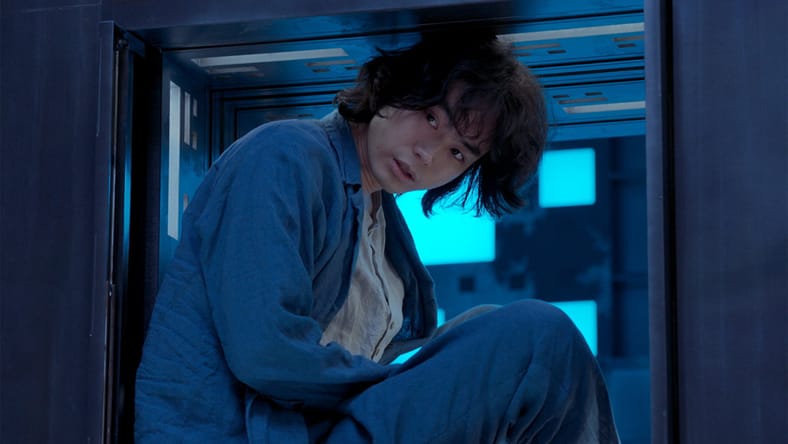It’s Not a Trap: Cube (2023) Review

I don’t have the same affinity for Vincenzo Natali’s Cube that some horror fans have (I’m more of a Splice man myself). A relic of the video rental era, Natali’s deviously gory dystopia had a tagline and box art to match. Cube and its many (admittedly convoluted) sequels follow a group of strangers plucked from their lives and plopped into the titular labyrinthine cube. The cubes within the cubes are filled with deadly traps, and participants must contend with dozens of rooms, hypercubes, and violent personalities if they hope to escape with their lives. Lionsgate, once poised to remake the original, has been MIA. Instead, director Yasuhiko Shimizu, with Natali attached as an executive producer, has crafted a Japanese remake of his own. Luckily, this Cube avoids most of the traps that plague many remakes.
Fundamentally, Cube as a remake does very little to distinguish itself from the original. In fact, its biggest divergences are simultaneously its biggest detractions. Cube is considerably less violent than its predecessor and inexplicably runs an additional 18 minutes longer. Cube, comfortable in the pathos of J-horror fare, endeavors to flesh out its cast of characters. Yet, the script gives no one aside from Masaki Suda’s quasi-protagonist Yuichi Gotomuch much of anything beyond an archetypal playbook.
Cube introduces Hikaru Tashiro’s Chiharu as the young savant equipped to assess the room’s prime numbers and develop a plan. Anne Watanabe’s Asako rarely speaks, satisfying the genre’s kind of regressive “she’s sympathetic because she’s a woman” role and little more. Among the core sextet, no one turns in a bad performance, exactly. Takumi Saitoh’s Ide is particularly good as the gruff, mysterious brawn of the group. Mostly, however, they amble about the rooms as tropes more than they do fully developed characters. Natali’s Cube wasn’t exactly a sterling example of characterization, though, in fairness, it didn’t dedicate an additional 18 minutes to developing it.
Yet, it’s in that adherence to the beats of the original that Cube excels. Shimizu and scribe Kôji Tokuo add some compelling wrinkles and cultural points of relevancy. They augment the more conventional routine of enter room, dodge trap, repeat. And, while most of the traps seen here are either inspired by or directly borrowed from the first, Shimizu exploits the familiarity to cultivate some effective tension, most notably in the group’s navigation of a sound-sensitive room. As an entry point for unfamiliar audiences, some fans might be disappointed to hear that the original’s use of prime numbers and Cartesian coordinates is acknowledged in the most perfunctory way possible, though the stripped-down approach works to thrill without overwhelming.
As Cube unfurls, the movie does belabor to make some points about inequality, discontent, and a general sense of misanthropy plaguing the present generation. It’s suitably existentially chilling. It won’t yield the same grisly efficacy as the original, though it tries to do its own thing. In a remake, that’s nothing if not laudable.
Cube isn’t going to win over any franchise diehards. There’s nothing new here. The few additions there jeopardize those elements that made the original so effective. Audiences with only a passing familiarity with the original, however, will find a lot to like. A kind of sanitized Cube, it works to acclimate a new generation to a horror classic. After decades of the West remaking and homogenizing dozens of Japanese horror movies, it’s only fair that Cube endeavors to do the same. And that it does so moderately well is no small feat. It’s not a trap, believe me.
Cube will exclusively premiere to stream on SCREAMBOX on April 11.
-
Cube
Summary
Fans unfamiliar with the original will find Cube a trap worth enduring.

